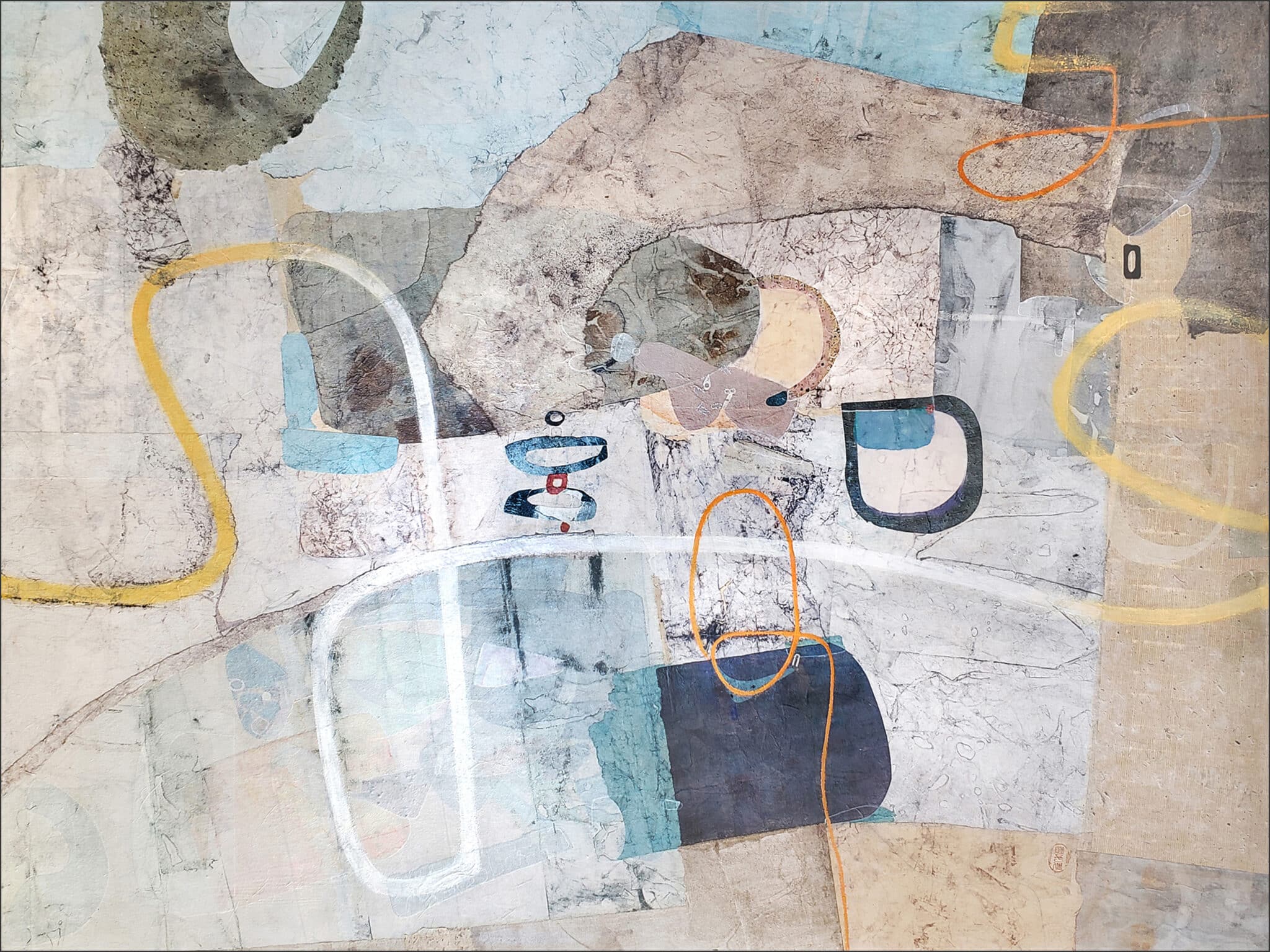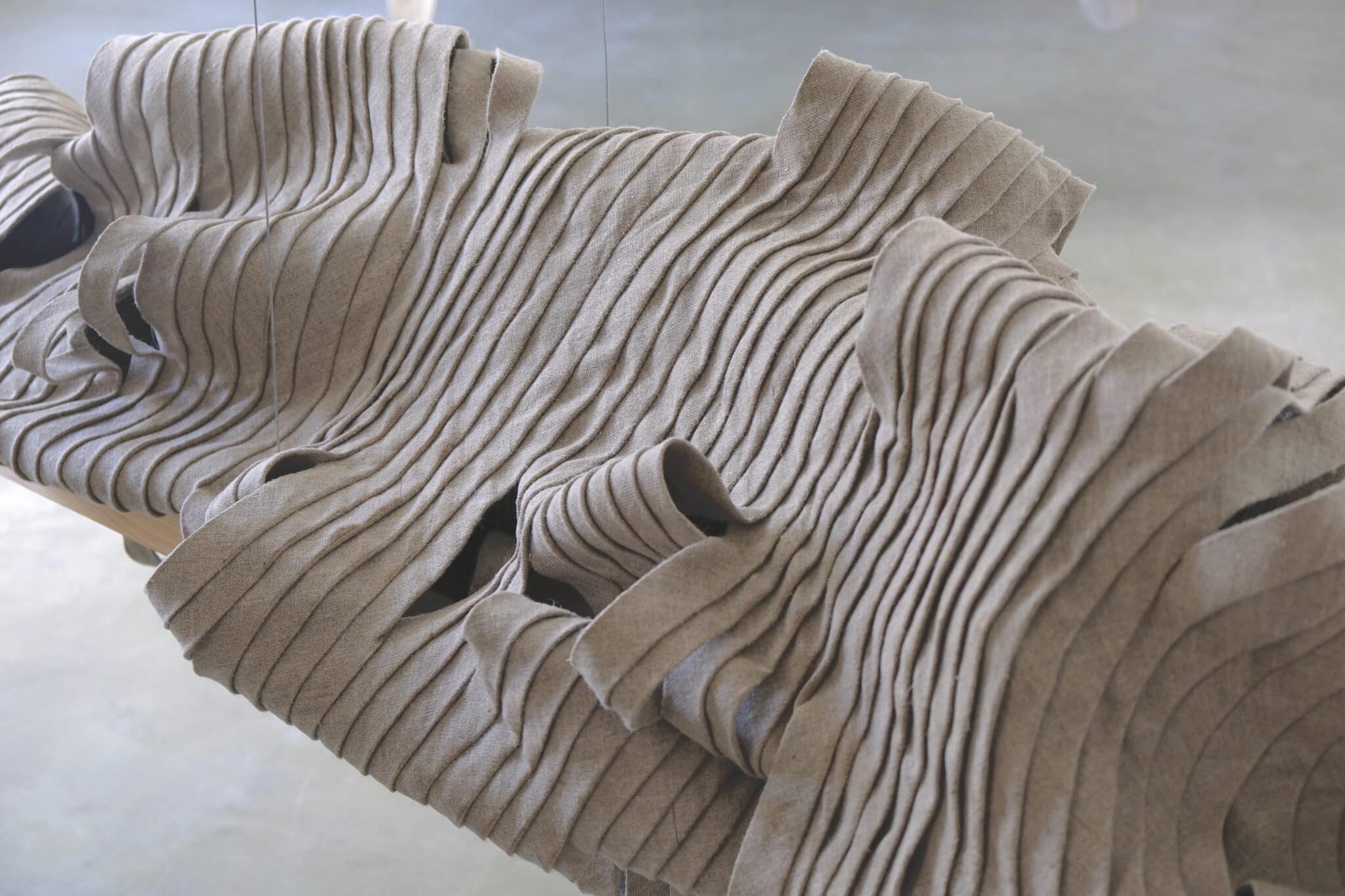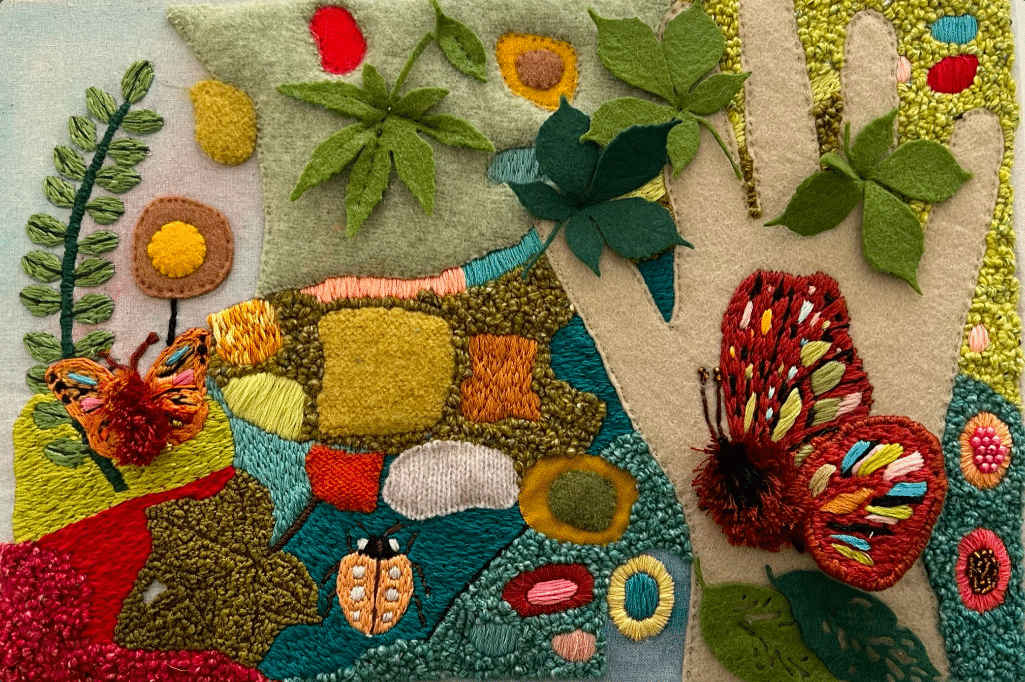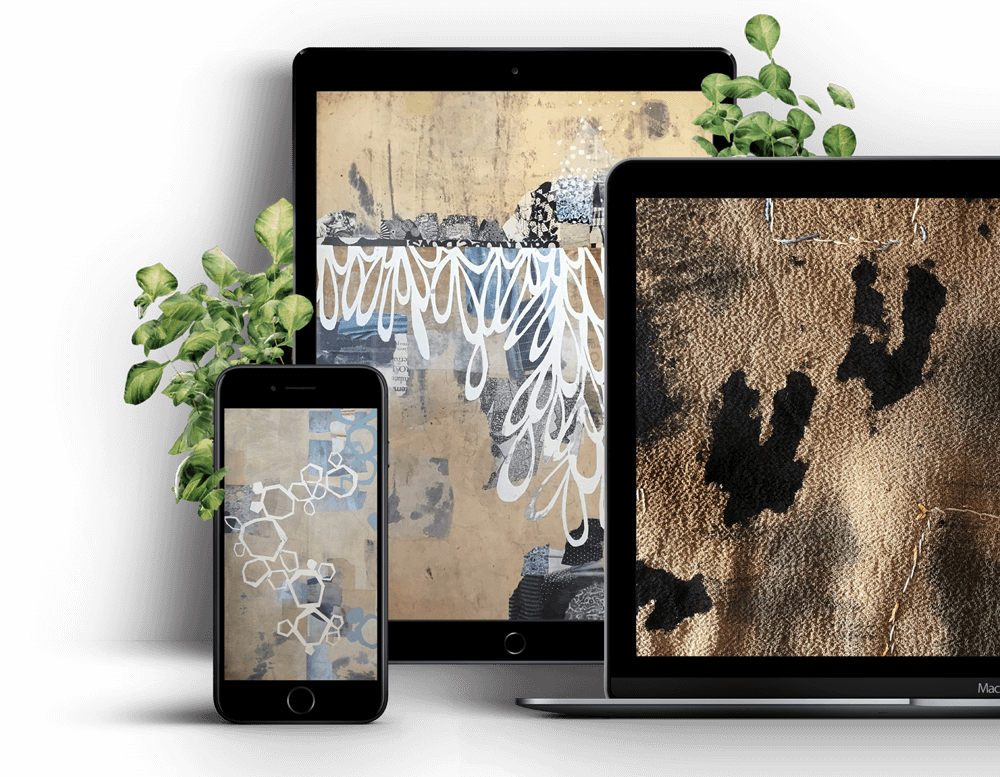Tansy Hargan
UK artist Tansy Hargan works the rainbow and explores the whole spectrum, listening with her eyes and observing everything she sees.
Tansy Hargan’s Friday Feature Artist Interview can be found at the bottom of this page.
Red and yellow, pink and green, purple and orange and blue. UK artist Tansy Hargan works the rainbow and explores the whole spectrum too. Listening with her eyes, listening with her ears, observing everything she sees.
Tansy has been a keen investigator of her surroundings from an early age, learning to stitch before she could write and creating detailed diaries as a child. With a masters in landscape architecture, Tansy has taken her observational skills to work on textiles and paper. Her work explores the many parallels between textiles and the processes that shape a landscape, describing her mixed media palette as an allusion to the materials and mechanisms of the landscape.
Fibre Arts Take Two delved beneath the layers with Tansy to learn more about her life and art.
Beginning with construction
Tansy’s love of art started early but in a way that differs from many other artists, “It was construction,” she says, “It was putting things together using the materials that were around me.”
Construction came naturally to Tansy thanks to her crafty family, “Both my grannies were knitters and stitchers,” she says, “My dad was an engineer and a civil servant, but he was a woodturner. My mum was a dentist, but she used to use her dental equipment to make tiny silver furniture for dollhouses. Basically, I was surrounded by things to put things together with. So I would pick these up; I wasn’t really interested in pens and pencils at first; it was about physically experimenting and figuring out: if I use this material, this strand, whether it was a dried-out chive leaf through an embroidery needle, or stitching leaves together into egg boxes. That’s where I started.“
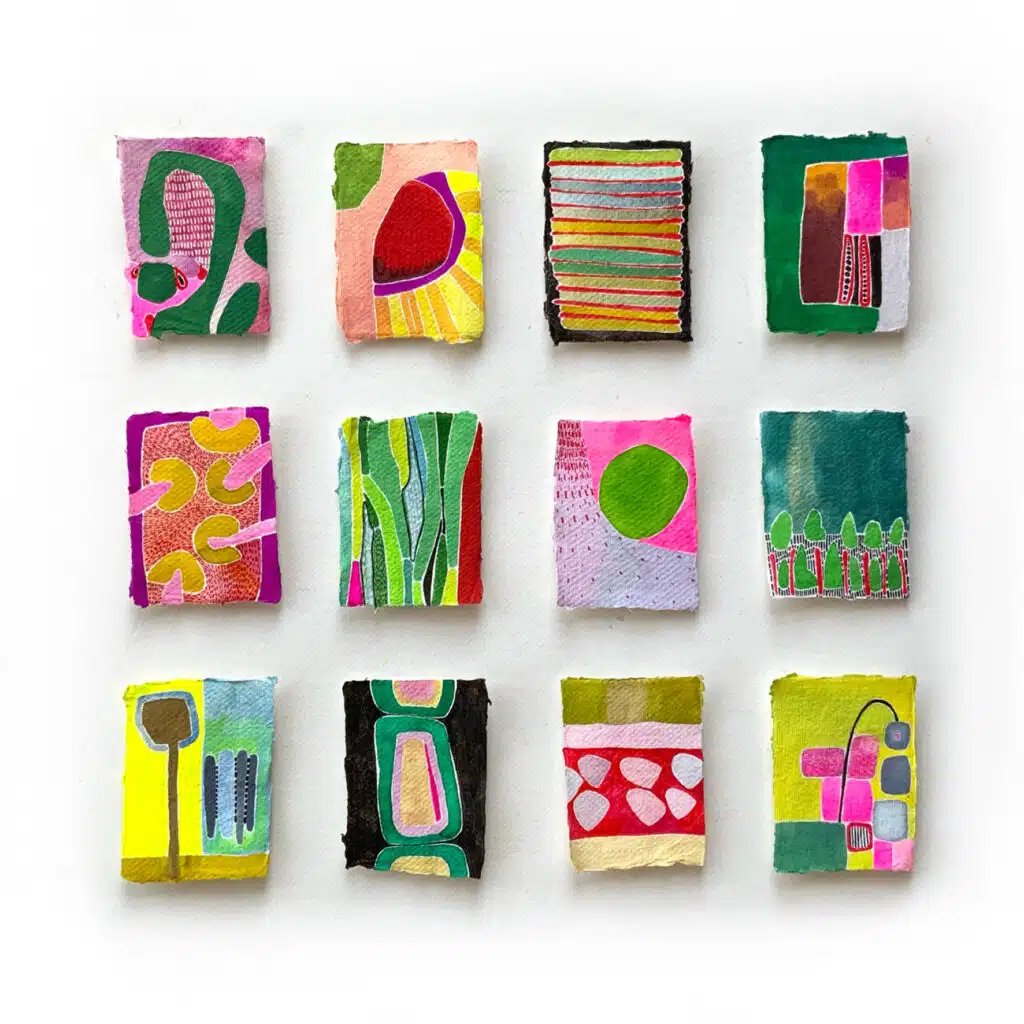
Landscape
Her background in enjoying construction aside, Tansy says her training in architectural landscaping plays a significant role in her art, “I would say it’s absolutely pivotal,” she says, “not just as a landscape architect, but going back to my first degree; architecture. I think that when you are improving places for people and wildlife, and I consider architecture does that as well as landscape architecture, or can if it’s being placed correctly, you’re looking at details at the micro and the macro, and automatically you get patterns. So you spot forms when you’re a designer, and if you are translating those in the back of your head or on your sketchbook on travels into small works, then the patterns from nature will influence you. It’s a collaboration between you and what you’re observing as a professional.”
Viewfinders
Tansy is a major promoter of using viewfinders as an artistic tool. “I was shown a viewfinder in the first year in architecture the same way I was shown a sketchbook,” she explains, “It was an architect who worked as an external teacher. So he was very much a busy architect running jobs, and he held up this sketchbook, and he said, ‘If I do my job right, this will be part of your brain in 30 years’ time.’ And he did his job right, but he also showed us how to use a viewfinder. It was just a torn hole in a train ticket.”
She may have started with a humble torn train ticket, but Tansy’s love for the viewfinder has lasted ever since, “Using a viewfinder helps you to just focus,” she says, “And zoom in on one thing at a time. It reminds you to look up and just capture the proportion of sky you can see at this point and to look down and to get down on your knees and look at some moss and stones. That’s the thing about the viewfinder, it is a constraint, but it helps to be constrained. It means you can compartmentalise, and then when you do that, you can see the wealth of detail. You can pull things out of the sort of cacophony of visual stimulus.”
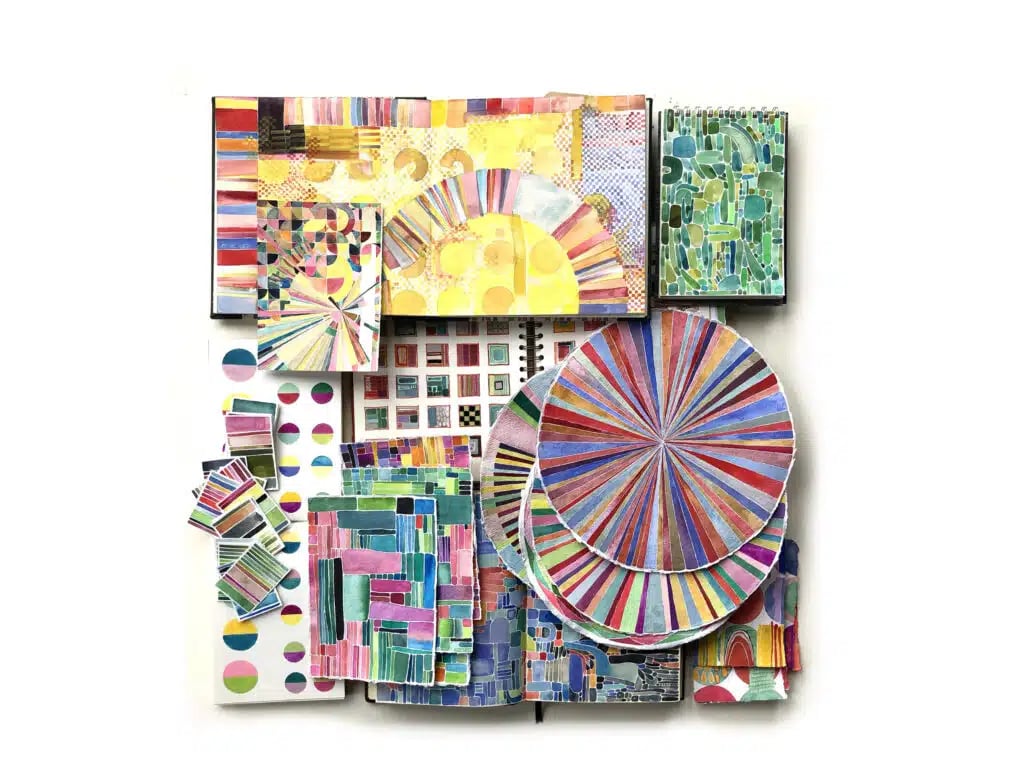
It’s about colour
“For me, it’s about colour,” says Tansy, “Colour came before anything. I can remember being in the garden and picking lots of petals and organising them into colour, this would have been, not long after I was able to remember what I was doing, I was playing with colour and really examining the tiny differences.”
Tansy takes this lifelong passion for colour to new levels in her art, “It’s really the whole spectrum,” she says, “And it’s really nuanced differences between colour so it’s not just, this is red, and this is blue. It’s a very slight tweak. I can actually picture colour when I’m tasting something or I’m having a conversation with a new person. And I think it’s me translating experiences into my own understanding, my own language; maybe sometimes it’s a comforting thing because I am an introvert in lots of ways, and I think that colour is my comfort blanket. But also, I think it’s about language.”
Watercolour
Tansy has recently funnelled her love of colour into a new and rewarding outlet, creating her own watercolours. “I buy loads and loads of watercolours,” Tansy explains, “I’ve got a lot. So I’m a real consumer of watercolours, and I do get through them because I paint; you probably only see a fraction of what I do. So then, doing my online courses, I have lots of people saying, ‘Where do you get your lovely watercolours from?’ So I spent a while telling people all the places that I buy them, and I just started thinking there was an opportunity to make my own.”
And making her own watercolours is exactly what Tansy is now doing, “I like cooking,” she says, “I like making clothing; I’d rather make a loaf of bread and make my own chutney than go to the supermarket. It’s a lot more expensive to just make your own paint. But if I could make paint and sell it, then I could get other people to pay for my desire to make my own paint. So I thought, yeah, I could make my own paint and share it with all these lovely people who are asking me where my paint comes from.“
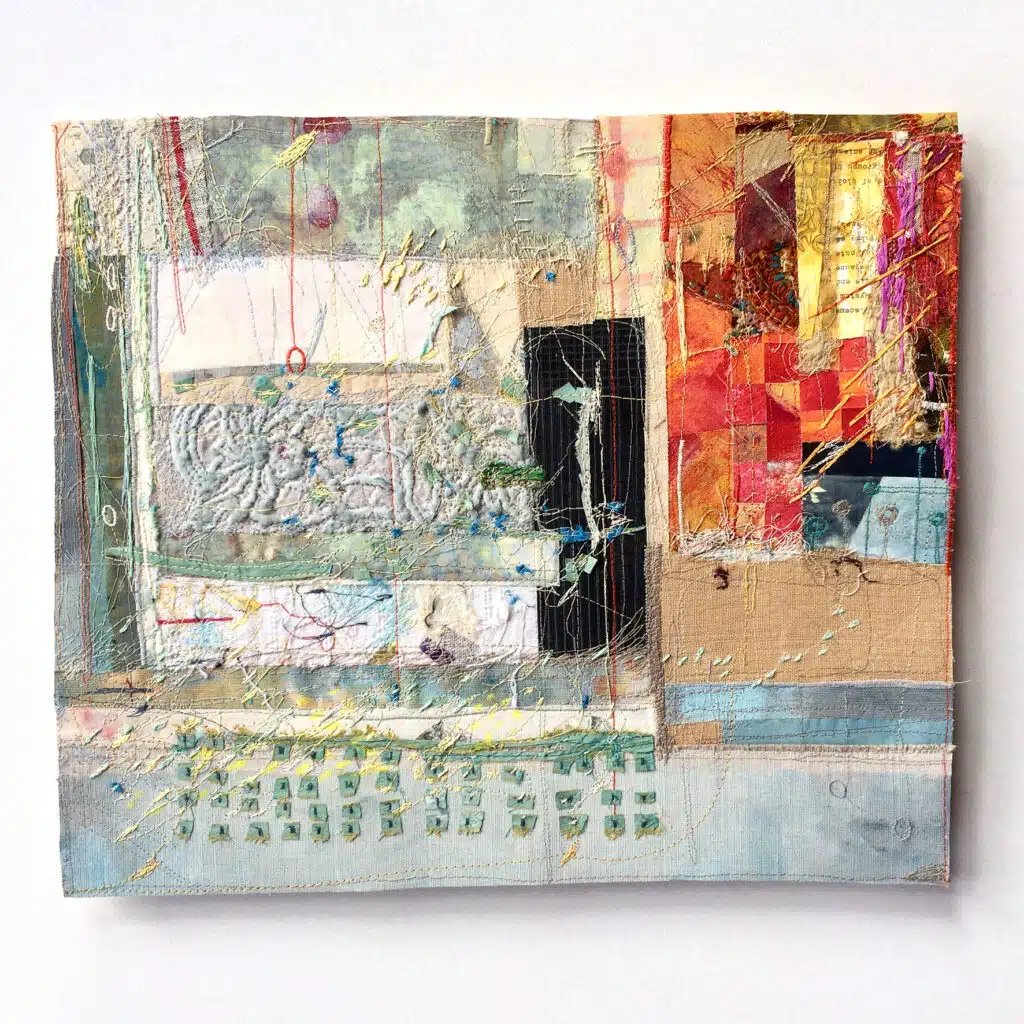
About the artist
Tansy Hargan is a British artist based in Sheffield, U.K. In spite of her professional background in architecture and landscape architecture, sketching and textiles have been her principal media for over 20 years.
Tansy says, “My work is the result of a long-term critical observation of landscapes and ecological processes. I explore urban and rural places with my sketchbook, making brisk marks and colour blocks to simplify and record snapshots of what I experience. Repetition and annotation are important parts of my practice, both in helping me see and understand concepts and typologies and as a way of generating multiple compositions for distinct bodies of work. My mixed media palette is an allusion to the materials and mechanisms of landscape: it is layered and adapted, diverse and inventive.
Notifications
Join Our Newsletter
OUR YOUTUBE CHANNEL
View our interviews and more on our Youtube channel!
OUR FACEBOOK GROUP
Join our Community and stay updated with our upcoming announcements!
